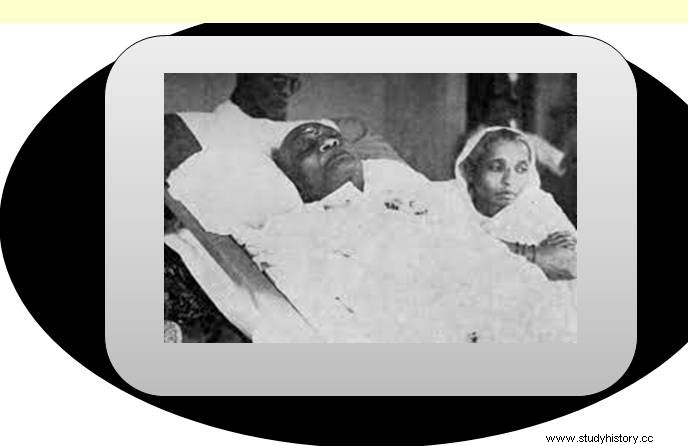
Patel's health deteriorated sharply in the summer of 1950. There was blood in his cough. Maniben reduced Patel's meetings and working hours, and personal medical staff was appointed to look after Patel's health. West Bengal Chief Minister Bidhan Roy, who was also a doctor, learned that Patel was now joking about his near death and asked his fellow minister N.V. It has been said before Gadgil that now he will not live for long. Patel's health deteriorated on 2 November 1950. He started fainting again and again. He was taken to Delhi on 12 December 1950.
That day Nehru, Rajagopalachari, Rajendra Prasad and Menon came to see him off at the Delhi airport. Patel had become very weak. He was boarded in the plane along with the chair. A huge crowd stood to welcome him at the Santa Cruz airport in Bombay. Patel was landed at the Juhu airport to avoid tension. Here Chief Minister B. Jeetra Kher and Morarji Desai welcomed him.
The car of the Governor of Bombay had come to collect him from which he reached Birla House. On 15 December 1950, he suffered a second acute heart attack and died. The day after his death, more than one and a half thousand officers of the Indian Civil Services and the Indian Police Service attended Patel's residence in Delhi and paid tribute to him. He took an oath of full devotion to Mother India. Such a scene has never been seen before in the history of India. The Bombay government planned to perform his last rites at Girgaum Chowpatty, but Maniben said that the Sardar wished that his last rites should be performed in Sonapur like a common man.
Now this place is called Marine Lines. Patel's brother and Patel's wife were cremated at this place. One million people came to attend his funeral. Prime Minister Nehru, Rajagopalachari and President Dr. Rajendra Prasad were also present. On his death, the Manchester Guardian wrote that the same person seldom succeeded as a rebel and a statesman, but Patel was an exception in this regard.
